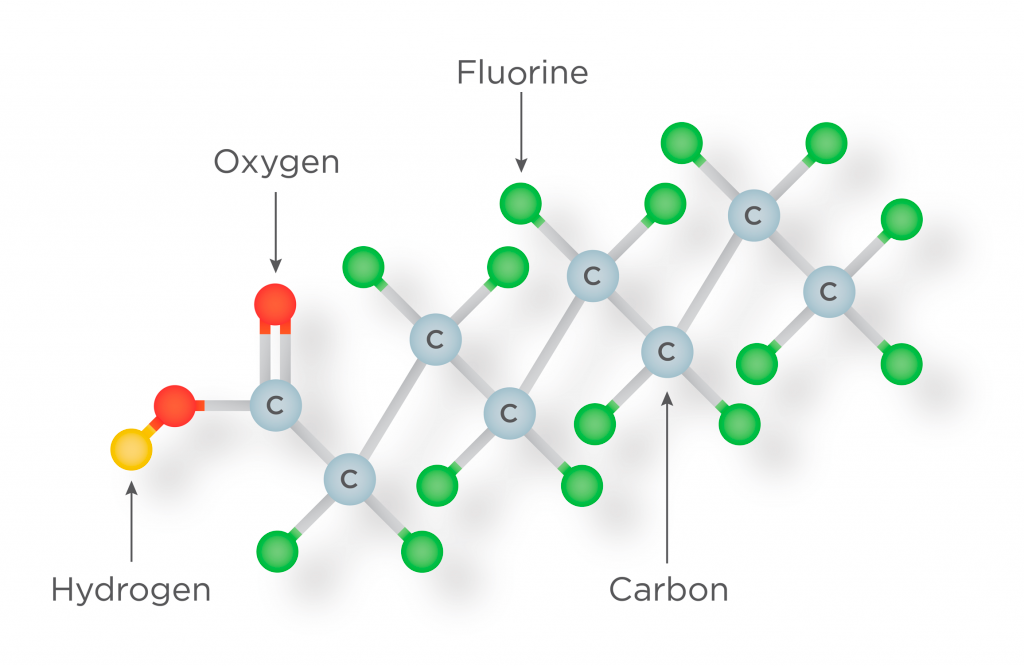The New Jersey Department of Environmental Protection (NJDEP) has adopted rules to establish maximum contaminant levels (MCLs) for perfluorooctanoic acid (PFOA) and perfluorooctanesulfonic acid (PFOS), two of the most prominent per- and polyfluoroalkyl substances (PFAS), putting New Jersey at the forefront of setting environmental standards for these contaminants.

The rules, adopted on June 1, 2020, amend the New Jersey Safe Drinking Water Act (N.J.A.C. 7:10) in establishing an MCL of 0.014 micrograms per liter (µg/l) for PFOA and an MCL of 0.013 µg/l for PFOS, otherwise referenced as 13 and 14 parts per trillion (ppt), respectively. PFOA and PFOS are two chemicals in a larger class of PFAS chemicals that have been detected in drinking water supplies in New Jersey and pose serious health threats to consumers, according to the Rule Adoption Document published in the New Jersey Register. The NJDEP also established an MCL of 0.013 µg/l for perfluorononanoic acid (PFNA), another PFAS chemical, back in September 2018. There are currently no federal drinking water standards for these contaminants.
Download the Rule Adoption Document published in the New Jersey Register on June 1, 2020.
The rule adoption amends the following legislation and enacts the listed provisions:
- New Jersey Safe Drinking Water Act (N.J.A.C. 7:10): Public water systems are required to routinely monitor for PFOA and PFOS and treat the water when there is an exceedance of an MCL. Monitoring requirements are being adopted and the existing rules (N.J.A.C. 7:10 5-2) will soon reflect the changes, according to the Rule Adoption Document. The amendments also details the PFOA and PFOS monitoring data the public water systems must include in the annual consumer confidence report describing the quality of the water delivered to customers.
- Private Well Testing Act (N.J.A.C. 7:9E): Private wells subject to sale or lease are required to be tested for PFNA, PFOA and PFOS. Newly constructed wells for select public and nonpublic water systems must also be tested.
- Ground Water Quality Standards (N.J.A.C. 7:9C): Adopts specific ground water quality standards of 0.014 µg/l for PFOA and 0.013 µg/l for PFOS. These new ground water quality standards also serve as the remediation standards for cleanup of contaminated ground water (N.J.A.C. 7:26D-2.2(a)). A specific ground water quality standard of 0.013 µg/l for PFNA was adopted in January 2018 (50 N.J.R. 334(a)). For site remediation purposes, the NJDEP references its March 2019 guidance document on the implementation of interim specific ground water quality standards for PFOA and PFOS, which was set at 0.01 µg/l, or 10 ppt.
- New Jersey Pollutant Discharge Elimination System rules (N.J.A.C. 7:14A): Standards for PFNA, PFOA and PFOS have been added to the Permit Application Testing Requirements/Pollutant Listings and Requirements for Discharges to Ground Water.
- List of Hazardous Substances (N.J.A.C. 7:1E), Discharges of Petroleum and other Hazardous Substances rules: The acid form of both PFOA and PFOS are being added to these lists. PFNA in its anionic form, salts and esters are also being added to the List of Hazardous Substances.

New Jersey’s standards are the strictest among states that have regulated these chemicals. They are also much more stringent than recommended guidance set forth by the United States Environmental Protection Agency (EPA) including a screening level of 0.04 µg/l, or 40 ppt, and Lifetime Drinking Water Health Advisory level of 0.07 µg/l, or 70 ppt.
Read more about federal efforts to regulate PFAS chemicals.
If you have questions, or are interested in learning how Penn E&R can assist your company with sampling for PFAS, contact a Penn E&R professional at (215) 997-9000.

